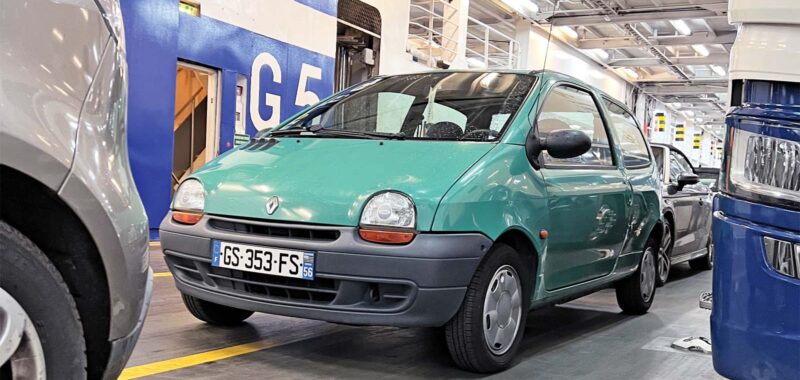In July 1993, Autocar put its money where its heart was and bought a first-generation Renault Twingo. Because the cute new city car wasn’t on sale in the UK, we had to buy a left-hand-drive example in its native France (price: £6500) and import it.
Months of living with it justified our faith in the Twingo. Everyone on the team loved its styling, packaging, refinement and driving manners. Soon more of these quirky cars began appearing on UK roads.
Now, 31 years later, another Mk1 Twingo, coincidentally also a 1993-reg model painted in Vert Coriandre, has arrived in Britain. It has done 80,000 miles but is in good condition.
Explaining his reasons for buying and importing it, Nick Bailey says: “I’ve always been captivated by the first-generation Renault Twingo. While studying in France in 1993, I promised myself that one day I’d have one.”
Unfortunately, at this point our old friend Brexit must enter the story. Prior to the UK’s departure from the EU, importing a car from Europe was fairly straightforward, but since 31 January 2020, it has been a bit more complicated.
Most people will go first to the UK government website’s page that explains how to import a car. A key requirement is that you must inform HMRC within 14 days of receiving it, using something called the Nova (Notification of Vehicle Arrivals) service.
This also calculates how much VAT and duty is owed on the car.
The rules concerning VAT are, at first glance, quite simple, with cars older than 30 years, no longer in production and unmodified attracting a 5% tax on their purchase price and younger cars a 20% tax.
However, there’s also VAT to pay on shipping and on the import duty.
The website says that importers can call HMRC to find out what they owe in taxes, but in October 2022 it stopped offering that service, and now someone wishing to import a car must employ an import agent to liaise with it.
Usually for around £120, the agent will complete the relevant Nova sections and submit the evidence (original registration certificate, vehicle purchase and shipping invoices) that HMRC requires to calculate what is owed.
On receipt of payment, HMRC will issue a C384 ‘application for release’ form enabling the importer to proceed to the next step: registering the car.
Those less than 10 years old require a European Certificate of Conformity and a certificate of GB conversion IVA (Individual Vehicle Approval) confirming that the headlights and rear foglight, for example, are legal.
Cars older than 10 years will have their lights checked during the MOT test.

